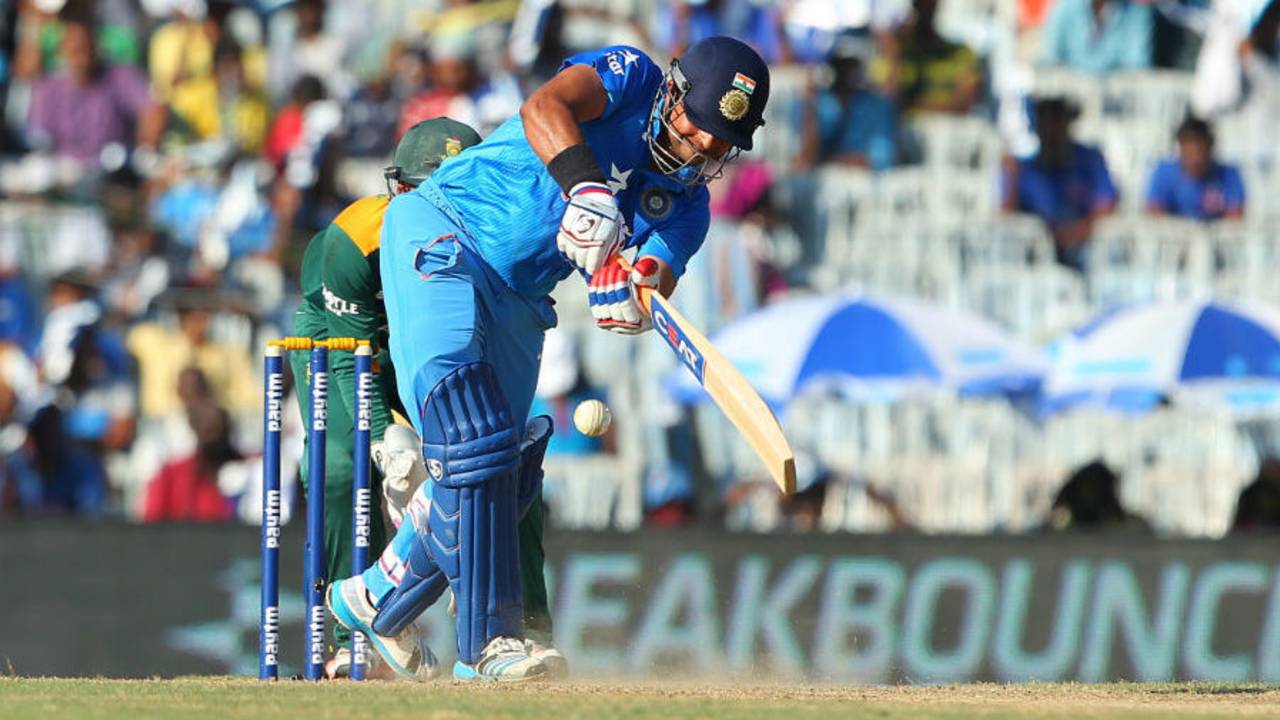Excluding Raina was a harsh decision - Laxman
Former India batsman VVS Laxman feels the ODI side may be one batsman short for their upcoming limited-overs tour of Australia
ESPNcricinfo staff
24-Dec-2015
VVS Laxman feels that Suresh Raina's exclusion from the ODI squad for Australia would make the batsman hungrier for success • BCCI
Former India batsman VVS Laxman believes the ODI side is one batsman short for their upcoming limited-overs tour of Australia. India's ODI squad to Australia has only five specialist batsmen after the selectors dropped Suresh Raina, following a poor series against South Africa.
Laxman, who was at a promotional event in Delhi, said the decision was harsh on Raina, but would make the batsman hungrier for success in the future, should he make the cut.
"I think we are one batsman short. I still feel it was harsh on Suresh Raina. He did really well in the World Cup. He had a tough series against South Africa. Coming at No. 6, when the asking rate is 8 or 10 and with the change in the new rules, the conditions against South Africa were not ideal to play the big shots straightaway," Laxman said at a Star Sports event to promote India's limited-overs tour of Australia.
"It's always a pressure situation whenever he walks out to bat. This is also good for him. Raina is probably a very important member if India has to win the T20 World Cup. This will hurt him, but also make him hungrier."
Laxman also urged India's pacers to refrain from bowling short-pitched deliveries at the Australia batsmen in the series. He brought up India's World Cup 2015 semi-final against Australia in March this year as an example of why a short-ball strategy would hurt India. Led by Steven Smith's 105, Australia rattled up 328 for 7 in the semi-final after opting to bat, and India could only muster 233 in reply.
"You can bowl short to other teams, which are not used to playing in Australian conditions," Laxman said. "But if you bowl short to the Australians they will cut and pull you. That is what happened during the semi-final.
"Warner is most dangerous batsman in the line-up and you cannot bowl defensive lines to him. There is a formula to get him out and I am sure Ishant Sharma knows that because when he was in (Hyderabad) Sunrisers, we realised what shots he likes to play and what he doesn't. It is important to make him play the cover drive, and once you do that you always have a chance to dismiss him early on. But don't bowl short deliveries to him, because he will cut and pull."
Kapil Dev, who was also at the event, said that India would need to focus on getting early wickets in the first 15 overs, even if it came at the cost of a few runs. It was the only way, he said, India could keep Australia from making a strong comeback.
"In Australia or even South Africa, the ball does something even after 35 overs. There is bounce and nip for a fast bowler," Dev said. "I think that is the best part. After 35 overs, I hit the deck and the wicketkeeper holds it up very nicely. So if the batsman loses concentration you can get a wicket.
"Somebody who can bowl close to 140 kph will be a success in Australia. At the same time, if you want to do well in Australia, it's important for you to pick up wickets. Get three wickets in the first 15 overs, even if you have conceded 90 runs. Because then you still have a chance to make a comeback. But if you don't take wickets and give away 45 runs, they can always make a comeback. Don't concentrate on bowling maidens overs, think about getting wickets only."
Stating that the top four batsmen in the line-up would have to absorb most of the responsibility, Laxman stressed on the importance of playing with an angled bat in Australian conditions. He said that batters could not play with a straight bat off the back foot.
"In Australia, you cannot afford to play on the back foot with a straight bat. The bat face has to be pointing down. Otherwise, it will straight away go to the slip owing to the extra bounce and pace," Laxman said. "It's important to play with an angled bat. Also the general mistake that a young batsman tends to make is that he will get out to the back of the length delivery. But then, it is the fuller delivery, which gets the batsman out. The challenge is not to lose wickets early on. There will be a lot of responsibility on the top four."
